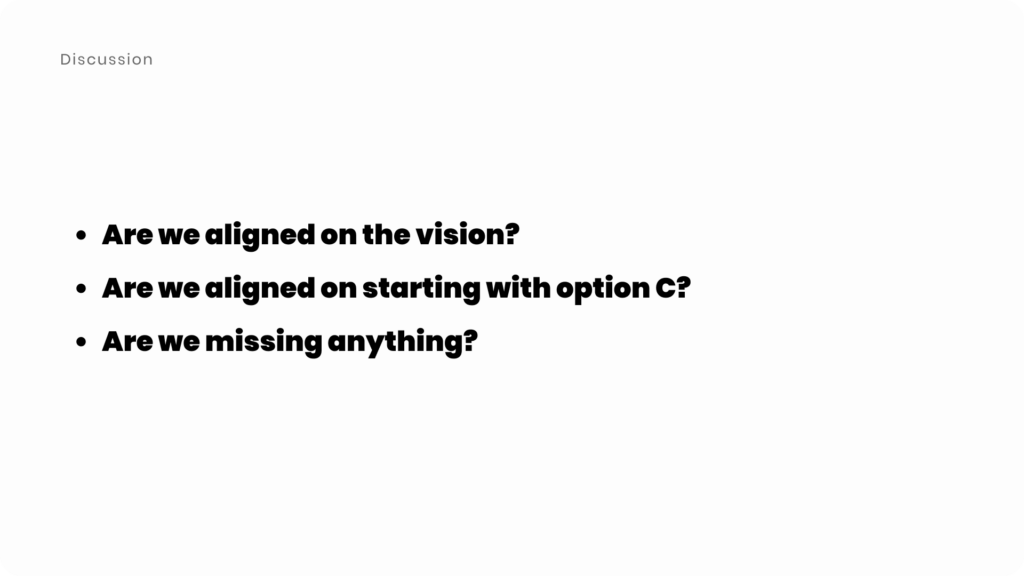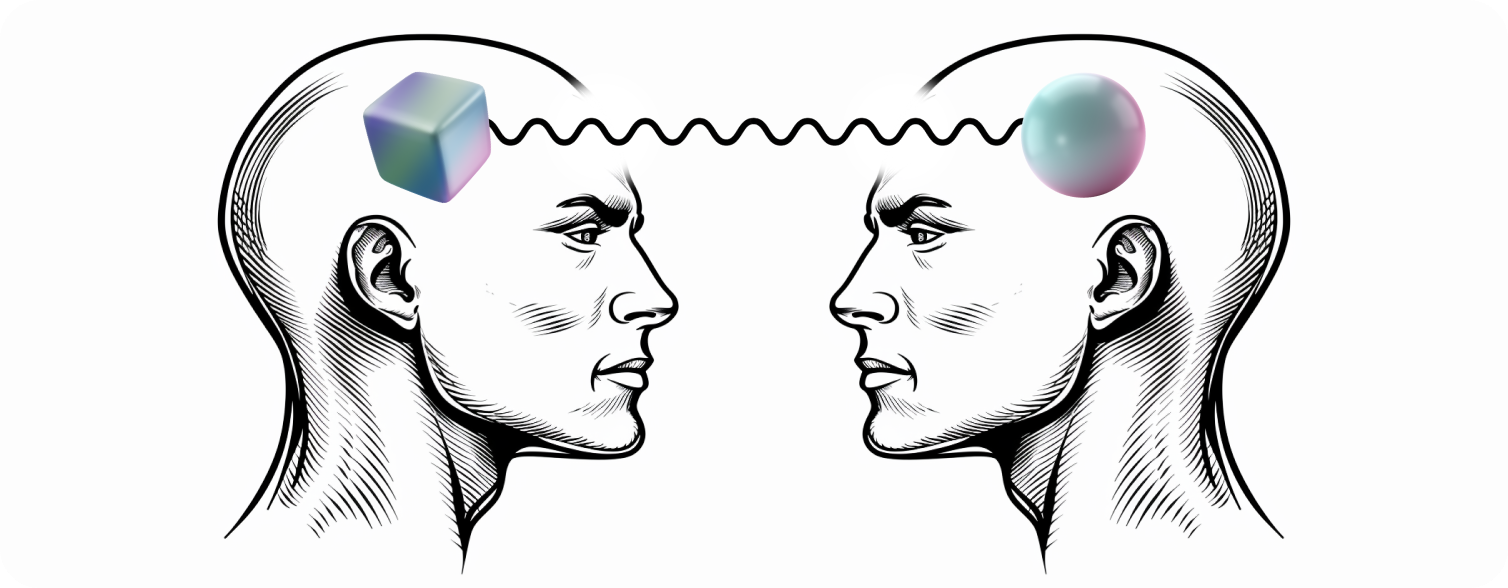Straightforward Tactics for Presenting Your Design
The gist
If you don’t want to spend time reading through the details, here are the takeaways:
- Assume your audience is new: Explain the context, challenges, and goals before presenting your design.
- Focus on the problem first: Clearly explain the issue users face and why it's important. Your design should be the solution.
- Speak plainly: Avoid design jargon and use clear, concise language that everyone understands.
- Use visuals wisely: Choose graphics that support your story and avoid overloading the presentation.
- Advocate for your solution: Present options but explain your design thinking and why you favor a specific approach.
- Have a clear call to action: Tell your audience what you need from them, like approval or feedback.
Imagine a game where people are assigned roles: "tapper" or "listener." The tapper taps out a familiar song on a table, and the listener tries to guess the song. Sounds easy, right?
Wrong! In a study by Elizabeth Newton, a psychology student, listeners only guessed the song correctly 2.5% of the time. Why? Because tappers are "cursed" by their knowledge.
Here's the twist: tappers thought listeners would guess the song half the time (50%)! Why the big difference?
The tappers can't help but hear the whole song in their head while tapping. But all the listener hears are taps, like a weird code. Tappers forget what it's like to not know the song, making it hard to explain it clearly.
This is the curse of knowledge: when we know something well, we assume others do too, leading to misunderstandings. For example, you might have presented a design with such conviction, only to be met with blank stares or hesitant questions. We, as designers, become so immersed in our knowledge of a certain feature that we forget our audience might not have the full context and can be completely lost.
Here's the truth: a successful design presentation isn't about dazzling with complexity, it's about clear communication. Through years of presenting at design-centric companies like Google and Instagram, I've come out with these key takeaways…
I will use this made-up business messaging app I am calling QuickChat to illustrate a few points:
1. Break the Curse. Assume Nobody Knows. Refrain from assuming your audience understands the context. Start by setting the stage – explain the current situation, the challenges users face, and the business goals at stake. This provides the foundation for your design to shine.
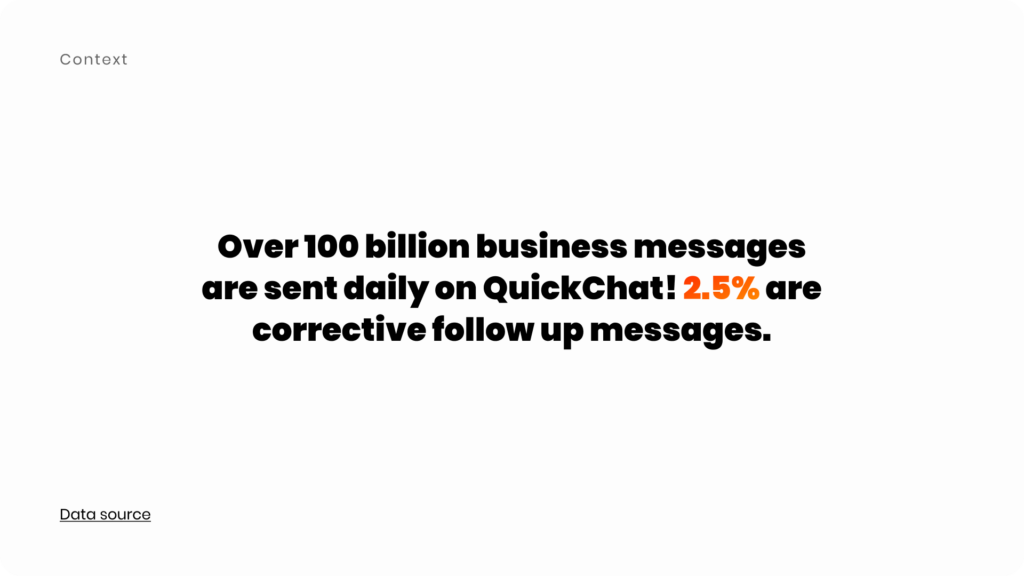
2. Problem First, Pretty Later. Don't jump straight to the aesthetics. Clearly articulate the specific problem you're solving. Why is it important? What pain points are users experiencing? Frame your design as the answer to a well-defined question. Pro Tip: Presenting data, and user quotes, can solidify your argument.
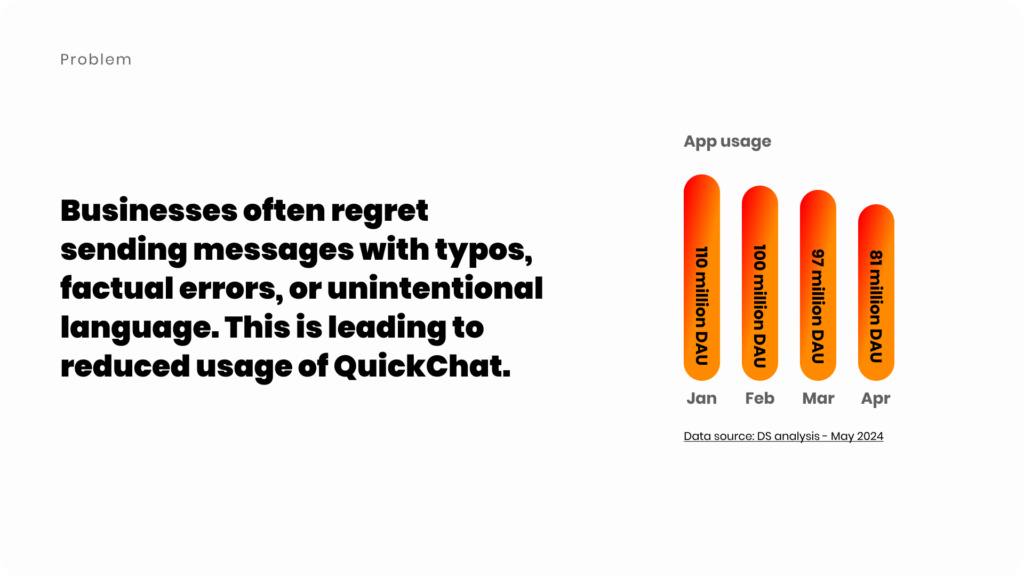
3. Speak Plain English. The jargon might impress other designers, but it alienates everyone else. Use clear, concise language everyone can understand. Focus on the user experience, not the technical specs. Remember, you're telling a story, not writing a developer manual.
Pro Tip: Talk it out! Record yourself explaining the idea like you're catching up with a friend. Then, listen back and capture those golden nuggets of clarity. Boom - a simpler, clearer message!
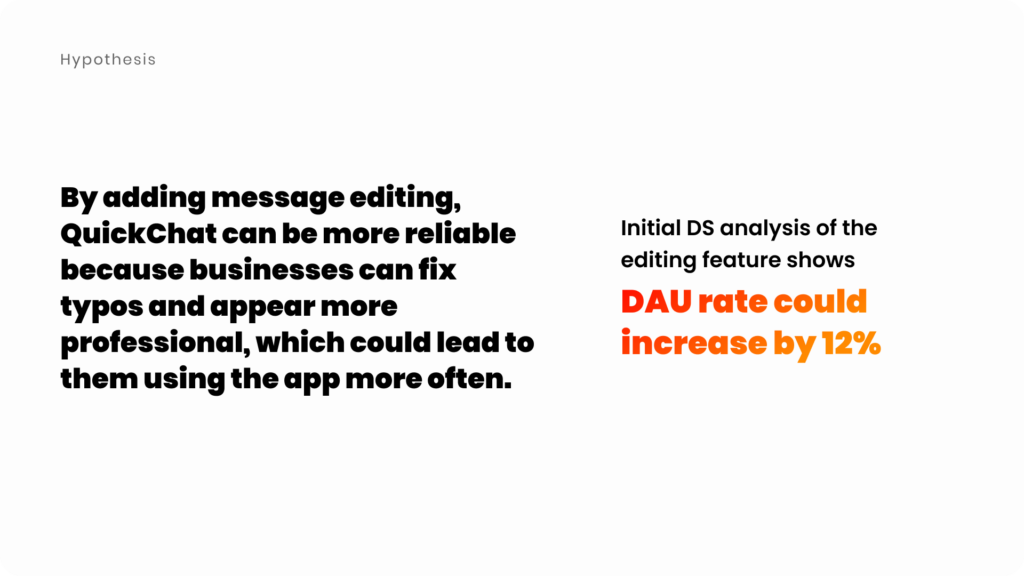
4. Give your visuals specific jobs. Images are powerful tools but choose them wisely. Don't overload your presentation with unnecessary mocks. Each visual should have a specific job, like contributing to the narrative and highlighting key aspects of your design and the problem it solves.

5. Present Options, But Take a Stand. Presenting different design iterations is okay, but don't leave the room hanging. Articulate your clear point of view and why you favor a specific approach. This demonstrates your design thinking process and builds confidence in your decision-making.
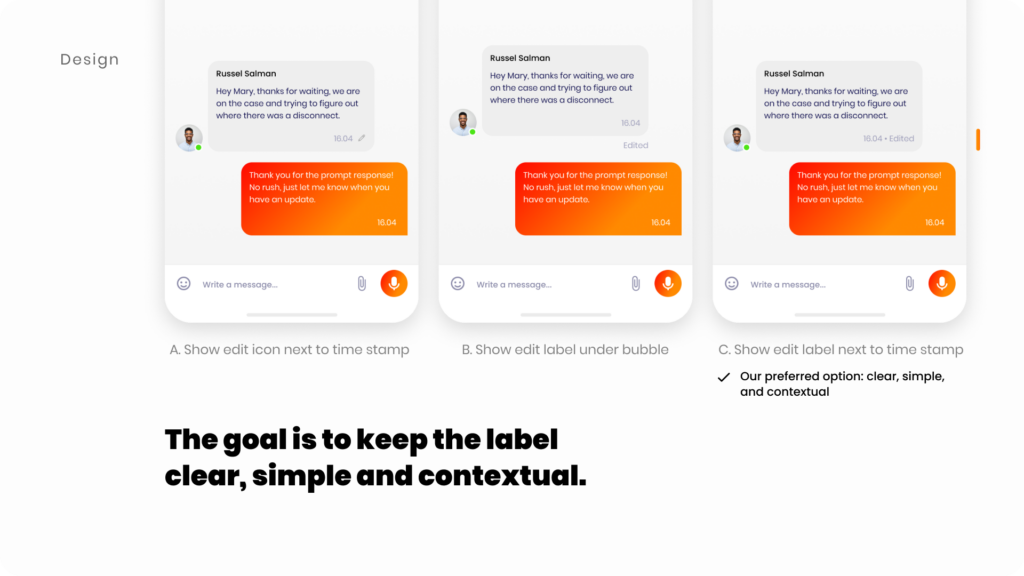
6. The Call to Action: Be Explicit. Make sure your audience understands what you need from them. Clearly state your desired outcome. Do you need approval to move forward? Feedback on a specific direction? The more explicit you are, the more likely you are to get the buy-in you need.
